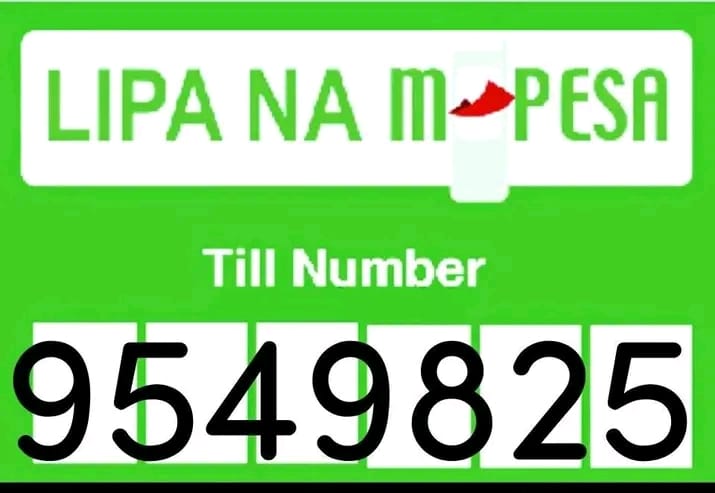
simply amazing, always for you.
Table of Contents
- Introduction
- What Is a Nosebleed?
- How Common Are Nosebleeds in Children?
- Top 10 Reasons Why Children Get Nosebleeds
- Dry Air
- Nose Picking
- Frequent Colds or Allergies
- Minor Injuries and Trauma
- Foreign Objects in the Nose
- Anatomical Variations
- Environmental Irritants
- Medications and Medical Treatments
- Underlying Health Conditions
- Hormonal Changes
- When Should You Worry About a Nosebleed?
- How to Treat a Nosebleed in a Child
- How to Prevent Nosebleeds in Children
- Conclusion
Introduction
If you’re a parent, seeing your child with a nosebleed can be a frightening experience—even if it’s something that’s actually very common. The sight of blood can trigger alarm, but the vast majority of nosebleeds in children are harmless and easy to manage. That said, frequent or severe nosebleeds can sometimes point to underlying issues that shouldn’t be ignored.

In this guide, we’ll take a deep dive into the most common (and uncommon) causes of nosebleeds in kids, how to handle them safely, ways to prevent them, and when it’s time to consult a doctor. Whether you’re looking for reassurance or seeking answers to recurring nosebleeds, this article has you covered.
What Is a Nosebleed?
A nosebleed, medically known as epistaxis, occurs when blood vessels in the nasal cavity break and begin to bleed. The nose is rich in blood vessels, especially in the front part of the septum—a region known as Kiesselbach’s plexus. This area is delicate and easily irritated, particularly in children whose tissues are more sensitive than adults’.
There are two types of nosebleeds:
- Anterior nosebleeds: The most common type, originating from the front of the nose.
- Posterior nosebleeds: Less common and more serious, originating deeper inside the nose.
In children, anterior nosebleeds are by far the most frequent and are usually not dangerous.
How Common Are Nosebleeds in Children?
Nosebleeds are extremely common in children, especially between the ages of 2 and 10. Many kids will experience at least one nosebleed in their early years, and some may have them regularly.
According to pediatric studies:
- Up to 60% of children have had at least one nosebleed by age 10.
- Around 10-15% of children experience recurring nosebleeds.
Although frequent nosebleeds can be annoying or worrisome, most are benign and manageable with simple home care.
Top 10 Reasons Why Children Get Nosebleeds
Let’s explore the most common reasons your child might be experiencing nosebleeds:

1. Dry Air
Dry indoor air—especially during the winter months or in arid climates—is a top cause of nosebleeds. Heating systems can reduce indoor humidity, leading to dry, cracked nasal tissues that bleed easily.
Signs:
- Nosebleeds in the morning or after sleep
- Dry or crusty nostrils
- Itching or nasal discomfort
Using a humidifier and applying a little petroleum jelly to the nostrils can help prevent this.
2. Nose Picking
Children are naturally curious, and that often leads to nose-picking—especially when their noses feel dry, itchy, or blocked. The mechanical action of picking can damage the thin lining of the nasal passage, causing bleeding.
Encouraging good hygiene and trimming fingernails short can help reduce this habit.
3. Frequent Colds or Allergies
When a child has a cold or suffers from seasonal allergies, the nasal tissues become inflamed and irritated. Constant nose blowing, sneezing, and rubbing the nose can lead to damage and minor bleeding.
Common allergens that contribute include:
- Dust mites
- Pollen
- Pet dander
- Mold
Managing allergies through antihistamines or doctor-approved treatments can reduce irritation.
4. Minor Injuries and Trauma
Kids are energetic and accident-prone. A minor bump to the face, a fall, or even vigorous roughhousing can result in trauma to the nose.
Even if the injury seems minor, the nose’s rich blood supply means it doesn’t take much to cause a bleed.
5. Foreign Objects in the Nose
Children—especially toddlers—sometimes insert objects like beads, food, or small toys into their nostrils. These foreign bodies can scratch or puncture the nasal lining, leading to bleeding.
If you suspect something is stuck in your child’s nose, don’t try to remove it yourself. Visit a doctor or urgent care facility.
6. Anatomical Variations
Some kids have natural anatomical differences, such as a deviated septum or prominent blood vessels close to the surface. These structural issues can make a child more prone to nosebleeds, especially during colds or when the nasal lining dries out.
A pediatric ENT (ear, nose, and throat) specialist can evaluate if this is the case.
7. Environmental Irritants
Exposure to smoke, strong odors, air pollution, or chemical fumes can irritate the nasal passages and lead to bleeding. This is especially problematic for children with sensitive noses or asthma.
Common irritants include:
- Secondhand cigarette smoke
- Cleaning products
- Airborne allergens
Ensuring a clean, smoke-free indoor environment can greatly help.
8. Medications and Medical Treatments
Certain medications can dry out or thin the nasal lining, including:
- Nasal sprays (especially decongestants or corticosteroids)
- Antihistamines
- Blood-thinning medications (rare in children)
If your child is on any regular medications and experiencing nosebleeds, consult your pediatrician about side effects or alternatives.
9. Underlying Health Conditions
Although rare, frequent or severe nosebleeds may point to underlying medical issues, such as:
- Bleeding disorders (e.g., hemophilia, von Willebrand disease)
- Low platelet count
- Leukemia
- Chronic infections
- Nasal tumors (very rare in children)
These are typically accompanied by other symptoms like easy bruising, fatigue, or bleeding from other parts of the body.
If nosebleeds are persistent or accompanied by other health concerns, seek medical evaluation.
10. Hormonal Changes
In preteens and early adolescents, hormonal changes can increase blood flow to mucous membranes, including the nose. This heightened sensitivity, combined with other triggers like dry air, makes nosebleeds more likely.
This is typically a phase that resolves with age.
When Should You Worry About a Nosebleed?
Most nosebleeds are not serious, but here are some red flags that indicate you should call a doctor:
- Nosebleeds more than once a week
- Bleeding that lasts more than 15–20 minutes
- Blood coming from both nostrils
- Accompanied by easy bruising or unexplained bleeding elsewhere
- Suspected foreign object in the nose
- Signs of infection (fever, pus, swelling)
- Child appears weak, pale, or fatigued
How to Treat a Nosebleed in a Child
- Stay calm – Your child will take cues from you.
- Have them sit up and lean forward slightly – This prevents blood from going down the throat.
- Pinch the soft part of the nostrils and apply gentle pressure for 10 full minutes.
- Apply a cold compress to the bridge of the nose to help constrict blood vessels.
- Avoid blowing the nose or inserting anything inside it for a few hours after the bleeding stops.
Do not tilt the child’s head back—this can cause blood to flow down the throat and lead to nausea or coughing.
How to Prevent Nosebleeds in Children
- Use a cool mist humidifier in your child’s room.
- Apply saline nasal spray or a thin layer of petroleum jelly inside the nostrils.
- Discourage nose picking and teach children to blow their noses gently.
- Keep fingernails trimmed to avoid scratches inside the nose.
- Treat allergies and colds promptly.
- Avoid exposure to cigarette smoke and air irritants.
- Encourage hydration—well-hydrated tissues are less likely to crack or bleed.
Conclusion
Nosebleeds in children are common, often harmless, and usually nothing to worry about. From dry air to nose picking, the causes are typically easy to identify and treat. But if your child has frequent or severe nosebleeds, it’s always a good idea to talk to a pediatrician to rule out any underlying issues.
By understanding the reasons behind nosebleeds and following a few simple prevention tips, you can help your child stay comfortable, safe, and nosebleed-free.

Support Our Website!
We appreciate your visit and hope you find our content valuable. If you’d like to support us further, please consider contributing through the TILL NUMBER: 9549825. Your support helps us keep delivering great content!
If you’d like to support Nabado from outside Kenya, we invite you to send your contributions through trusted third-party services such as Remitly, SendWave, or WorldRemit. These platforms are reliable and convenient for international money transfers.
Please use the following details when sending your support:
Phone Number: +254701838999
Recipient Name: Peterson Getuma Okemwa
We sincerely appreciate your generosity and support. Thank you for being part of this journey!
